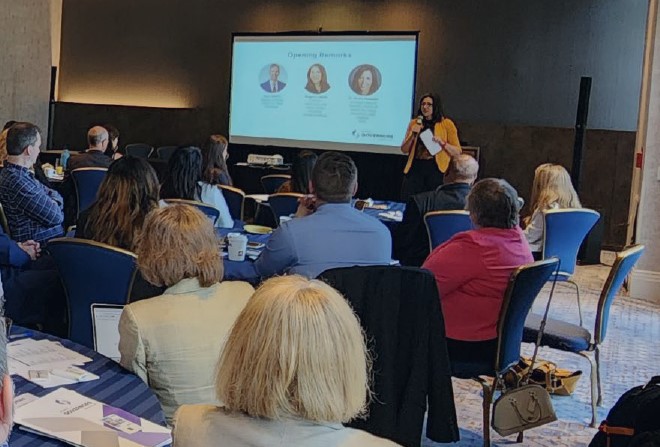This brief is part of a larger research effort that dissects Governors’ workforce development leadership in their states. In this report, NGA highlights how Governors are leveraging new industrial policy opportunities to strengthen workforce development in their states and meet labor market needs.
Executive Summary
As the federal government allocates trillions of dollars toward new industrial policies, states face a significant challenge: they will only succeed in realizing the economic potential of new investments in infrastructure, clean energy, and manufacturing if they have the skilled workforce to meet growing industry demands.
Filling millions of projected job openings in construction and advanced manufacturing is far from a straightforward task, despite the historic federal investments. Workforce development is an allowable use of some funds in the Infrastructure Investment and Jobs Act (IIJA), CHIPS and Science Act (CHIPS), and Inflation Reduction Act (IRA), but the statutes are structured in ways that require significant coordination at the state and regional levels for those dollars to be invested effectively. Furthermore, the role of the state workforce system across these three new federal programs is undefined.
Governors are in a unique position to identify, prioritize, and align workforce development investments across agencies and ensure that the new wave of industrial policies are implemented successfully. Through interviews with Governors’ workforce development policy advisors in sixteen states across parties, geographies, and population sizes, we explored how Governors are embracing this charge. We investigated how they are supporting workforce development related to new industrial policies, the challenges they are facing, and the emerging practices they are deploying.
This brief is part of a larger research effort that dissects Governors’ workforce development leadership in their states. In this report, we highlight how Governors are leveraging new industrial policy opportunities to strengthen workforce development in their states and meet labor market needs. While it is too early to know definitively “what works,” advisors shared their insights and strategies on the administration of the new laws and the implications they have observed for workforce development.
Through our interviews, we identified four common obstacles that Governors face to building the infrastructure, energy, and semiconductor workforce under IIJA, CHIPS, and IRA. Those obstacles include the lack of clarity around the role of the public workforce system, the complexity of coordinating funds across stakeholders, a lack of public sector capacity to support workforce development, and the difficulties of planning workforce development programs under uncertain timelines. In several cases, Governors are undertaking strategic approaches to tackle these challenges in partnership with state agencies, industries, and regions.
We identified seven emerging strategies that Governors are deploying as they implement industrial policies, including:
- Establishing a coherent, integrated workforce vision and related goals. Communicating a clear, strategic vision and targets through Executive Orders and other directives to build alignment across agencies.
- Hosting regular convenings with key stakeholders. Periodically bringing together stakeholders within and outside of government and in the business community to share activities and provide support.
- Investing in workforce system infrastructure. Funding new and updated workforce facilities and acquiring equipment to scale training programs.
- Developing data tools and resources. Building data dashboards and crosswalks to track funds, projects, and workforce needs.
- Providing guidance to grant applicants and administrators. Providing technical assistance and workforce resources to applicants seeking or implementing grants.
- Leveraging the public workforce system as a local connector. Connecting with employers across the state through workforce boards and American Job Centers.
- Aligning existing education and training efforts with new industries. Providing funding to align training programs and systems with new industrial policy goals.
Several states are advancing targeted approaches. For example, Michigan Governor Gretchen Whitmer issued an Executive Order setting a clear workforce vision for new industries. She is also investing in workforce capacity-building and community outreach efforts. Meanwhile, Utah Governor Spencer Cox’s Office of Planning and Budget created an IIJA Opportunity Tracker tool, which allows the office to manage the allocation of new resources and monitor progress toward workforce goals. Throughout this brief, we highlight several innovative strategies that Governors are leading in their states.
As Governors navigate the complex landscape of new industrial policies, they can learn from one another and implement new solutions to meet workforce challenges. We hope that this paper can help Governors achieve their workforce development goals and grow their state economies.













